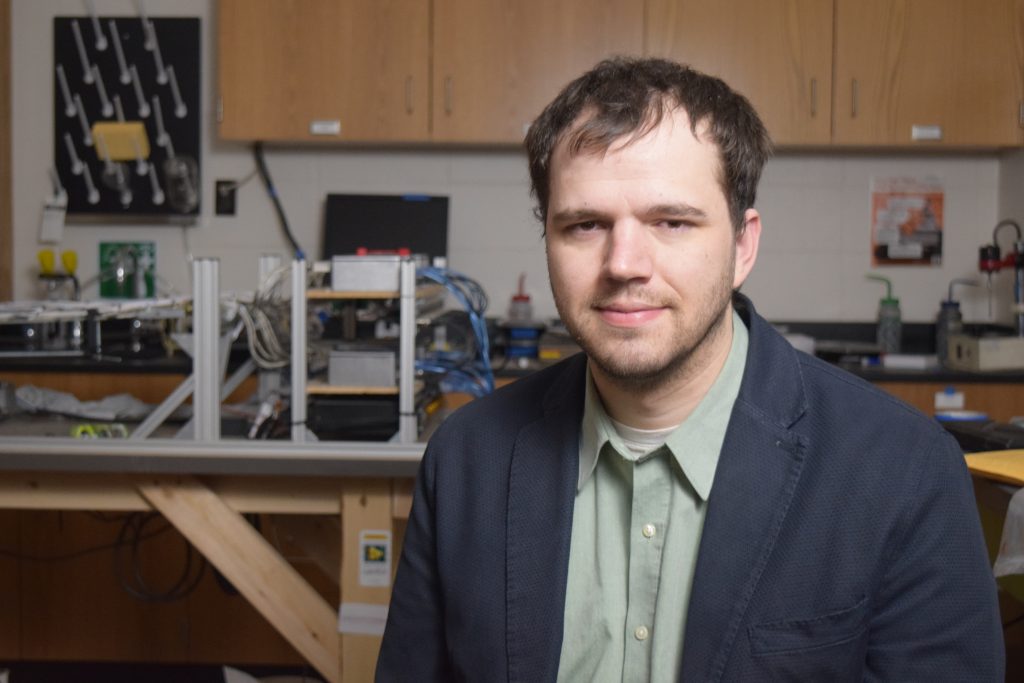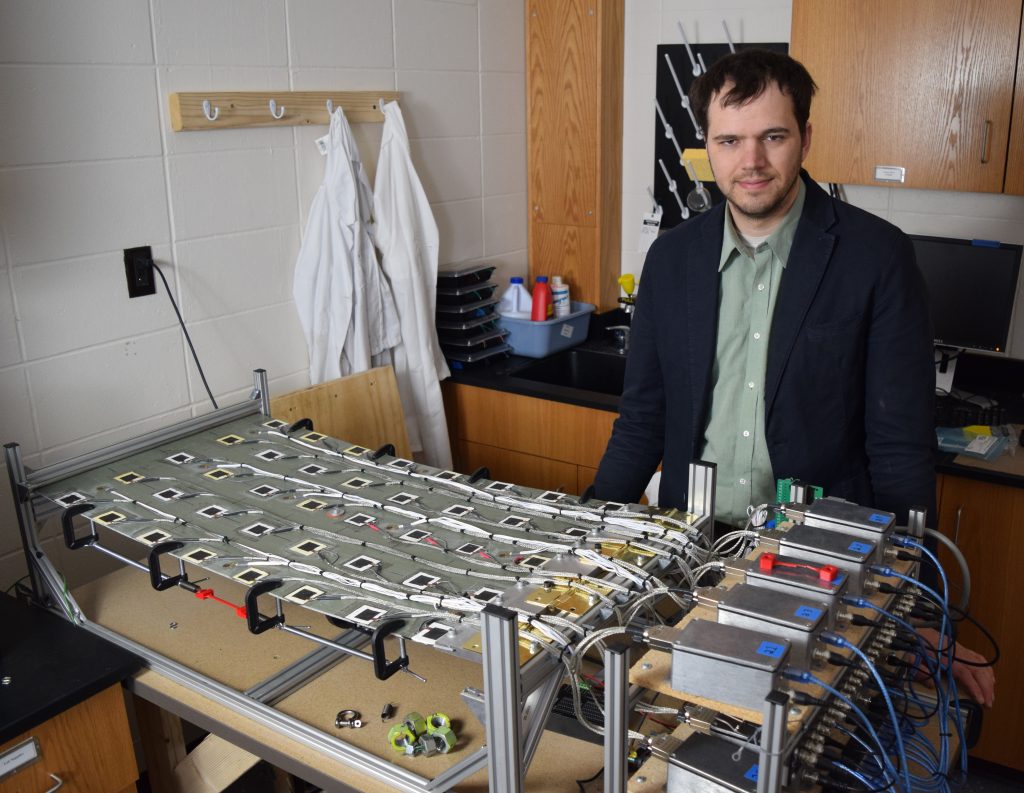
Austin Downey is currently pursuing a PhD in Wind Energy Science Engineering and Policy administered by the mechanical engineering department. He was recently named an honorable mention for Iowa State’s Zaffarano Award which recognizes excellence in graduate research. This marks the fourth year in a row that a ME student has won the award or been named honorable mention. Downey plans to complete his degree requirements this summer.
Tell us a bit about yourself: Where are you from and when did you first begin developing an interest in engineering?
I grew up in northern Iowa and I have always enjoyed building and fixing things for other people. Earning a formal engineering degree has allowed me to work on projects that are important to a broader society, this is one of the reasons I have decided to focus my research on enhancing the safety and reliability of infrastructure.
What did you study as an undergraduate here at Iowa State?
I have a BS in Civil Engineering and was very involved in undergraduate research during my time here. This allowed me to easily transition into a research-heavy graduate school experience.
In what ways do you see overlap between civil engineering and mechanical engineering?
Successful engineering is all based on problem solving. Working on a research problem that requires knowledge of both fields allows me to approach and solve problems in a unique way. The hardest problems in engineering lie on the edges of traditional declines, therefore, working between two disciplines provides me with a unique perspective.
Tell us a bit about what your research involves.
My research is focused on developing a low-cost sensing skin for the structural health monitoring of infrastructures, including bridges, civil structures, aircraft, and wind turbines. The sensing skin consists of a novel and inexpensive large area electronic, termed the soft elastomeric capacitor (SEC), that when deployed in a network configuration is analogous to a biological skin where local changes (i.e. strain or damage) in a structure can be monitored over the structure’s global area. The real-time tracking of damages in structures will allow for more detailed infrastructure inspections and repairs, therefore, enhancing the safety and reliability of infrastructure.
What advice would you have for incoming college student who is interested in engineering?
My advice to students is to get involved in engineering-based clubs, activities, or research early on. These experience can really help students to understand what they enjoy and where their interests lie. In particular, undergraduate research can be helpful if you are considering grad school as it will introduce you to solving real problems in a research setting.
